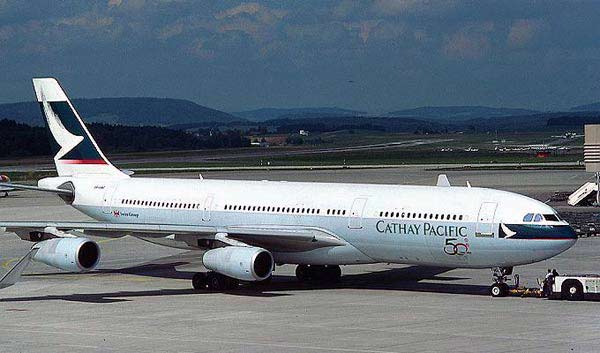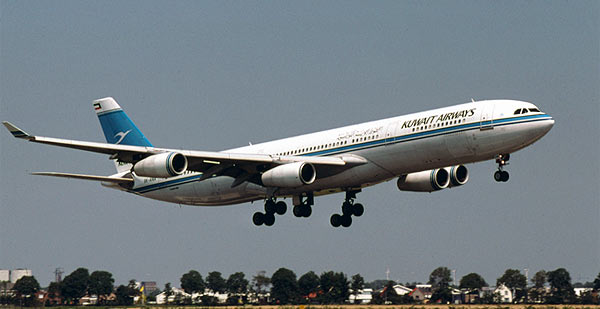|
|
| Airbus A340-page Home |
Widebody Aircraft Parade

Airbus A340The Airbus A340 is a large widebody aircraft for long-range flights. Airbus launched the A340 in June 1987 in parallel with the A330, as a single aircraft program: the A340 with four engines and the A330 with two. The A330 was most suitable for medium range sectors and the A340 for the very long range. The A340 is a competitor of the McDonnell Douglas MD-11 and the Boeing 777.
Propfan commotionThere was a lot of commotion in the aviation world these days about the so-called 'propfan' in these days, a turbofan concept with very high bypass ratio and without a nacelle. The propfan promised to be much more fuel-efficient than traditional turbofans. The SuperFan was a mix of the traditional turbofan and the propfan. It had the wide blades of the propfan but still the nacelle of the turbofan. IAE didn't proceed with the new engine, however. In the meantime CFM International had developed a more powerful version of the CFM56 and in April 1987 Airbus Industrie decided to fit this engine on the A340.
Looking for more rangeDuring the 1990s Boeing and Airbus were competing heavily on range with their 777 and A340 respectively. To counter the growing range of the 777 Airbus developed two new versions of the A340: the A340-500 and the A340-600. The manufacturer went ahead with the project in December 1997 and Virgin Atlantic became the first customer.
A340-200The A340-200 is the basic variant of the A340, seating 263 passengers in three-class layout. A340-300Almost identical to A340-200, the -300 has a longer fuselage and seats 295 passengers. In 1996 a higher weight variant of the -300 entered service with Singapore Airlines. This variant has more powerful engines and a strengthened wing. The A340-300E is an enhanced version which incorporates new technology from later projects. A340-8000The A340-8000 is a very long range version, with increased weights and more fuel capacity. Only one aircraft has been built, which is in service as a VIP aircraft (VIP=Very Importans Persons). A340-500In December 1997 Airbus officially launched two new A340 variants: the A340-500 and the A340-600. Both variants have a 20 percent larger wing area, more fuel capacity, more powerful engines (Rolls-Royce Trent instead of CFM56-5C) and longer fuselages compared to earlier versions. The A340-500 is an ultra-long-range version, which flew for the first time on 11 February 2002. A340-600The A340-600 is the longest passenger aircraft in the world. With a length of 75,30 meter it is almost 5 meter longer than the Boeing 747 Jumbo Jet and it is also almost 3 meter longer than the Airbus A380 'Super Jumbo'. The first flight was in April 2001 and the first production aircraft was delivered to Virgin Atlantic in July 2002.

|
A340 photos
A340-200/300
Aerol. Argentinas Air Canada Air China Air Jamaica Air Mauritius Air Tahiti Nui BWIA West Indies Cathay Pacific China Airlines China Eastern Emirates Iberia Kuwait Airways LAN Lufthansa Olympic Safi Airways SriLankan Airlines Surinam Airways Swiss Int. Air Lines TAP Air Portugal Turkish Airlines A340-500/600
Cathay Pacific Etihad Airways Lufthansa Qatar Airways South African TAM Thai International Virgin Atlantic  |
|
|
| HOME |
